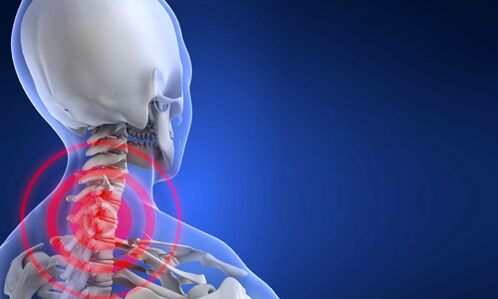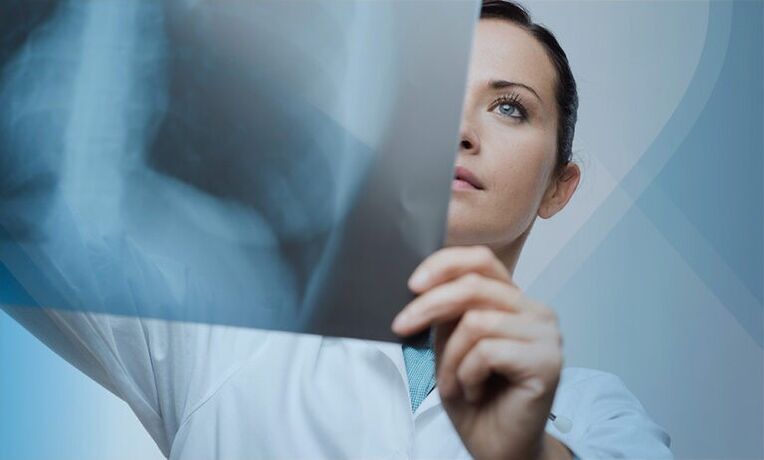Currently, not only people of retirement age are vulnerable to the disease; young people from the age of 25 are also included in the risk group. Osteochondrosis affects different areas and departments: lower back, neck, chest.

Causes and stages of cervical osteochondrosis
Osteochondrosis occurs due to the influence of these factors:
- excessive physical load on the spine;
- crooked, vertebral disc injury;
- nervous tension, stressful situations;
- insufficient intake of vitamins, minerals and trace elements, which slows down metabolic processes and leads to the formation of osteochondrosis;
- sedentary lifestyle;
- the presence of flat feet;
- sleep on a soft pillow or mattress;
- frequent uncomfortable postures while sitting;
- carry a bag on one side;
- circulatory disorders and muscle spasms.

All causes in combination or individually create favorable conditions for the development of osteochondrosis. Women are more prone to the disease, and wearing high heels and a bag on one shoulder exacerbates the situation, pregnancy is no exception. Failure to comply with the rules recommended by the treating physician exposes the health of the mother to serious violations.
In the process of pressure on the cervical region, cracks form in the cartilage, disc shifts and pinching of the nerves and spinal cord are possible. Along the cervical region there are vessels that supply the necessary material to the brain, squeezing it leading to serious health problems. If you do not treat osteochondrosis of the cervical spine at home, the person's condition worsens, the distance between the vertebrae narrows, then bone tissue grows, causing severe pain and discomfort. There are several stages of cervical osteochondrosis:
- The first stage is characterized by the appearance of cracks in the fibrous ring, possibly a displacement of the nucleus to the side. Symptoms will be shooting and sharp pain, sudden muscle spasms, the patient may have dilated pupils and numbness of the tongue - this is an indicator of the early stage of nerve violation. Specialists often also diagnose Wright and Naffziger syndrome, the characteristic features of which are numbness of the hands when lifted, tingling, pinching of nerve endings in the area of the collarbone. Pain in the neck that does not disappear by itself and often occurs during physical exercise, characteristic irritation in the affected area, fatigue for no reason, tinnitus.
- During the second stage, the gap between the vertebrae becomes narrower, this leads to drying of the fibrous rings, rupture of the capsule is also accompanied by inflammatory processes. Without proper treatment, osteophytes occur - the growth of bone tissue.
- The third stage is characterized by complete rupture of cartilaginous tissue, nucleus prolapse may occur, which gives rise to the formation of a herniated intervertebral disc. Symptoms that help to recognize the disease at stage 3 are often acute pain in the cervical region, frequent numbness of the limbs, a person can not control his arms or legs, this is accompanied by dizziness and headache, loss of consciousness.
Diagnosis and treatment of diseases

If you suspect cervical osteochondrosis, you cannot cure it yourself. The symptoms of some diseases are very similar to each other, and the medications themselves can cause deterioration in condition and wheelchair.
The disease is always easier to eradicate in the early stages of development, when it does not gain strength and has little damage to internal organs.
Loss of valuable time threatens with lengthy treatment, which consists of taking medications, physiotherapy training and observing the daily regimen.
If symptoms of the disease are detected, it is necessary to contact a specialist - a neuropathologist, he will be able to diagnose, determine damage to nerve endings and prescribe additional x -rays, vessel ultrasound, and tomography. Diagnosis is based on MRI and radiography.
In the early stages of the disease, patients can treat cervical osteochondrosis at home, visit a specialist at certain times and fully comply with his advice and prescriptions.
Drug treatment consists of taking certain medications, which must be prescribed by a doctor, depending on the stage of the disease and the general condition of the body, which indicates the dose:
- NSAIDs, reception lasts up to 2 weeks;
- sedatives prevent complete exhaustion of the nervous system, including motherwort tincture, valerian;
- when edema appears, the doctor prescribes a diuretic that reduces swelling of the inflamed area;
- thanks to the intake of vitamin B, metabolic processes in the affected tissues of the nervous system are normalized, neuromuscular conduction is improved;
- muscle relaxants relieve muscles prone to cramps;
- taking chondroprotective medications to improve intervertebral disc function and cartilage tissue;
- in addition, experts prescribe the use of ointments and creams, they relieve pain, warm the tissues and help alleviate the human condition.
If the patient feels unwell, bed rest is mandatory. Due to the correct body position, the vertebral disc relaxes, the pain is reduced. Bed rest lasts no more than 2 days, then the patient must be sure to move.
Tips to alleviate the human condition
Doctors often hear the question of how to treat cervical osteochondrosis at home. If the patient is in the acute stage of the disease, he is recommended to do light breathing exercises and some exercises to relieve cramps.
With improved well -being, it is allowed to carry out a set of exercises in a sitting or standing position under the supervision of an experienced specialist. Once a person has learned all the necessary rules and adheres to them strictly, he is allowed to do therapeutic exercises at home.
It consists of several smooth turns and tilt of the head, and then the load increases gradually. If muscle spasms suddenly occur, it is necessary to perform a light massage that does not cause pain and discomfort.
With good health for preventive purposes, experts recommend visiting an experienced massage therapist 2 times a year. It is not only able to warm up muscles properly and quickly, but also qualitatively remove small salt deposits and expand joints and vertebrae.
After consulting a doctor, it is permissible to use a Glisson loop, which consists of several ropes hung on a hook. They allow you to support your head and relieve pressure from your neck. Diet plays a major role in the treatment of cervical osteochondrosis. Experts advise to exclude from daily consumption products that can improve muscle tone and lead to cramps - coffee, tea, alcoholic and low -alcohol beverages, smoked products and spices. Someone with osteochondrosis will benefit from:

- foods high in fiber, phytochemicals and antioxidants, they will not only improve the general condition of the patient, but also have a positive effect on the vertebrae and cartilage tissue: these are fresh fruits and vegetables, legumes in any form, cereals;
- products containing protein - milk and its derivatives, any kind of nuts, eggs, lean meats and fish, beef;
- products with unsaturated fatty acids - types of sea fish fat, flaxseed, fry and dry a little;
- products with high levels of calcium in the composition - sour milk products, mineral water.
If a person is not in the acute stage, it is better not to take risks and not to spasm the affected tissue again due to eating the wrong food. You need to drink enough non -carbonated plain water, balance your diet, do daily exercises from therapeutic exercises, which not only weaken and relieve tension from the affected areas of the body, but also have a strengthening effect on the patient's body.
At work, you need to rest at short intervals, do a quick self -massage, and monitor proper posture.
The dangers of self -medication

In order not to put yourself at great risk, you don’t have to self -medicate. Only an experienced specialist can understand the disease, know the degree of osteochondrosis, take steps to eliminate the disease and prescribe proper and qualified treatment. Some diseases are quite dangerous and can easily disguise as other diseases.
Examination using X-rays, ultrasound, magnetic resonance imaging will help to examine the structure of the vertebral disc, detect problems and find the right options to eliminate them and alleviate the patient's condition. If a person heals himself, he can miss the early stages of the disease and expose his body to more destruction. Uncontrolled intake of the drug will damage not only the gastrointestinal tract, but also the liver and kidneys, which will remove toxins and cleanse the blood in an enhanced mode.
After consulting a doctor at home, you yourself can use a decoction of herbs and medicinal plants, which will enhance the effect of ointments and preparations:
- Celery: 1 teaspoon of crushed nuts of this plant is poured into 1 liter of warm water and set to infuse for 8 hours, after filtering, take 1 teaspoon. 3 times a day after meals. Celery seeds: 1 tbsp. l. pour 0. 5 liters of boiling water, insist for 2 hours and take 1 tbsp. l. 3 times a day before meals.
- Fresh horseradish or cabbage leaves, pre-tangled, applied to the sore spots, tied on it with a warm scarf or shawl and changed as needed.
Expert recommendations for the prevention of osteochondrosis
The most common mistake made by most patients is the persistent belief that the disease will go away on its own.
Doctors say that such an attitude towards a person’s health has a detrimental effect on a person’s condition and exacerbates the course of cervical osteochondrosis.
The course of treatment consists not only of eliminating pain, discomfort and some symptoms, but also restoring damaged vertebral and cervical discs, eliminating the squeezing of arteries leading to the brain, and maintaining a person’s well -being.
The recovery process is quite long and requires a lot of resilience, effort and help from relatives and friends, but the result will allow you to feel free, not dependent on medications and enjoy life.

























